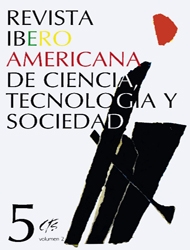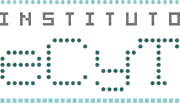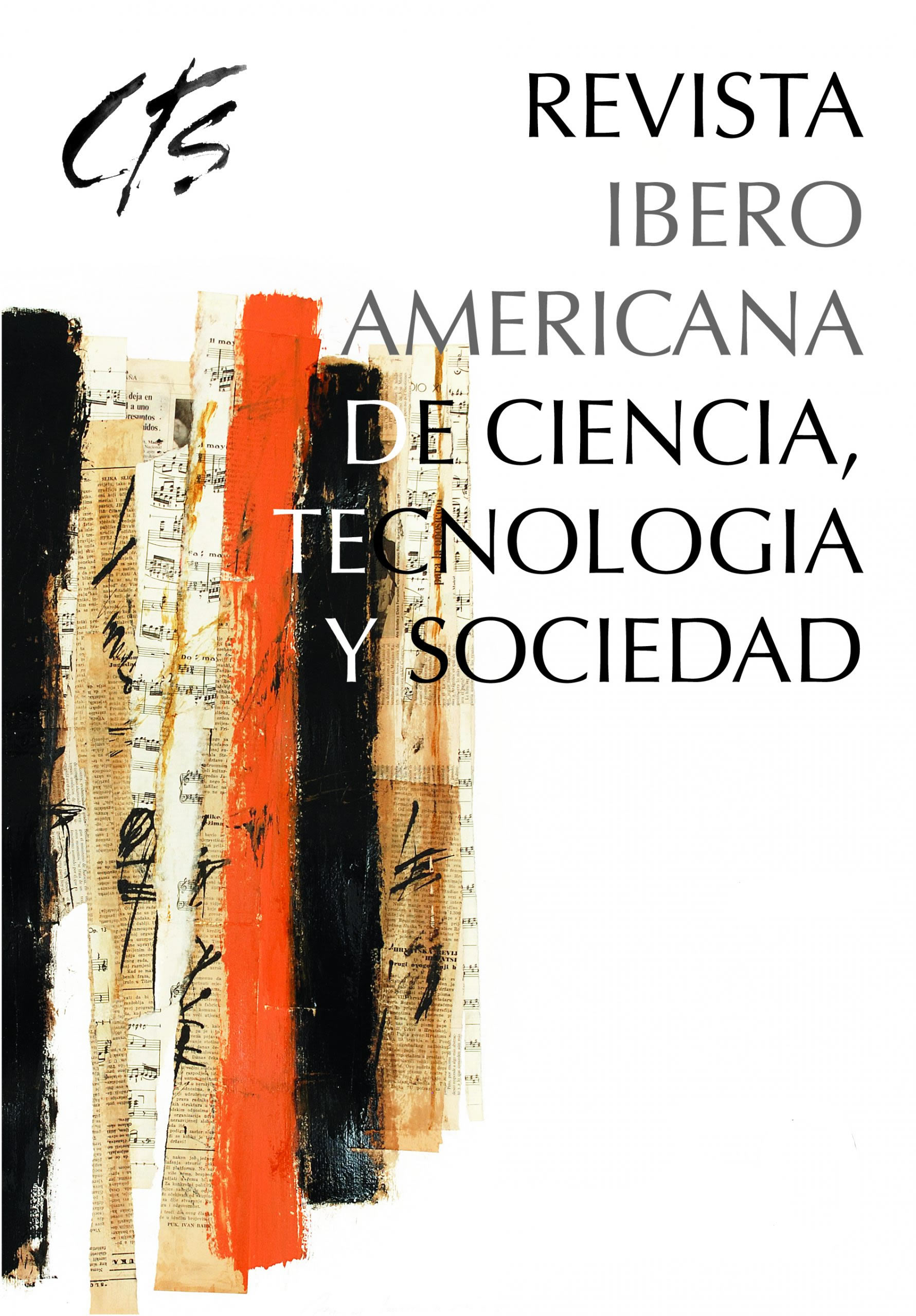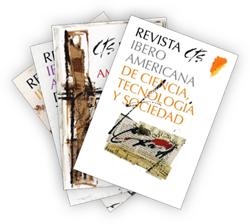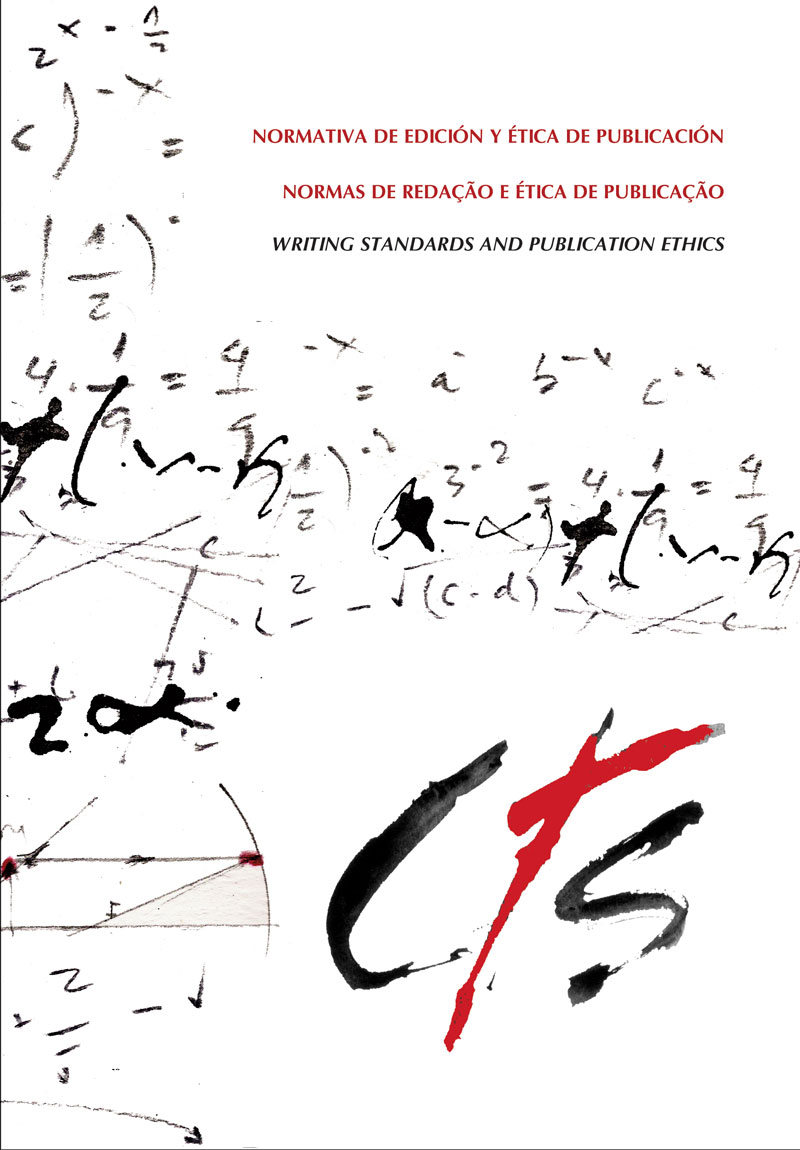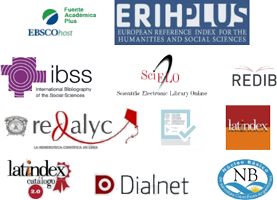Como terminam as controvérsias?
Um novo modelo de análise: a controversa história da sacarina
DOI:
https://doi.org/10.52712/issn.1850-0013-1013Palavras-chave:
dinâmica científica, controvérsia, encerramento, campos de controvérsias, sacarinaResumo
O artigo analisa a natureza teórica das controvérsias científicas, bem como sua definição e o papel desempenhado nos modelos de dinâmica científica. Após discutir as teorias existentes, tanto a partir de uma perspectiva de macrodinâmica quanto de microdinâmica da ciência, o autor propõe um conceito, o de “campos de controvérsias”, que contribui para uma melhor compreensão das controvérsias científicas e aprimora a explicação de seus encerramentos. Para ilustrar essas ideias, o autor desenvolve o estudo de caso sobre a história da toxicidade da sacarina.
Downloads
Referências
ACHINSTEIN, P. (1971): Law and Explanation. An Essay in the Philosophy of Science, Oxford: Clarendon Press.
AMBERGER-LAHRMANN, M.; SCHMÄHL, D. (eds.) (1987): Gifte. Geschichte der Toxikologie, Heidelberg: Springer Verlag.
AMES, Bruce N. (1983): “Dietary carcinogens and Anticarcinogens”, Science, 221: 1256-1264.
AMES, Bruce N. et al. (1990): “Too Many Rodent Carcinogens: Mitogenesis Increases Mutagenesis”, Science, 249: 970-971.
ARNOLD, D. et al. (1983): “Saccharin: A toxicological and Historical Perspective”, Toxicology, 27: 179-256.
BECK, Ulrich (1992): “From industrial Society to the Risk Society: Questions of Sur”, Theory, Culture and Society, 9: 97-123.
BEYER, Oskar (1918): Ueber dir Kontrolle und Herstellung von Saccharin, Zürich: Rascher & Cie. , Verlag.
BEYTHIEN, A. et al. (1912): Handbuch der Nahrungsmitteluntersuchung, 3 Bänden, Leipzig, Chr. Herm. Tauchnitz.
BIJKER, Weibe E. et al. (ed.) (1987): The Social Construction of Technological Systems: New Directions in the Sociology and History of Technology, USA: The MIT Press.
BRANTE, Thomas et al. (eds.) (1993): Controversial Science (From Content to Contention), USA: State University of NY.
BRANTE, Thomas (1993): “Reasons for Studying Scientific and Science-Based Controversies”, en Brante, Thomas et al. (eds.) (1993) Controversial Science (From Content to Contention), USA: State University of NY, pp. 177-191.
CALLON, Michel (1995): “Four Models for the Dynamics of Science”, en Jasanoff, Sheila (ed.) (1995) Handbook of Science and Technology Studies, UK: Sage Publications, 29-63.
CASTELLS, Manuel (2000): La era de la información. 3 vol, Madrid: Alianza.
COLLINS, H. (1983): “An Empirical Relativist Programme in the Sociology of Scientific Knowledge”, en Knorr-Cetina, K & Mulkay, M. (eds.), Science Observed, Bristol: J.W. Arrowsmith.
COLLINS, H. (1981): “The pace of ‘core-set’ in modern science: social contingency with methodological propierty in science”, History of Science, 19: 6-19.
COLLINS, H. (1975): “The Seven Sexes. A Study in the Sociology of a Phenomenon, Or the Replication of Experiments in Physics”, Sociology, 9.
COLLINS, H. y PINCH, T. (1982): Frames of Meaning, London: Routledge.
CORBELLA, Jacinto (1998): Historia de la Toxicología. Del Escorpión a las Dioxinas, Barcelona: Publicaciones del Seminario Pere Mata - Universitat de Barcelona.
CRANMER, Morris F. (1980): Saccharin. A Report, USA: American Drug research Institute, Inc.
DALY, John (1977) The Saccharin Ban: Risks vs. Benefits (Round Table hold on April 21, 1977, Sponsored by Center for health Policy Research of the American Enterprise Institute for Public Policy Research (AEI), Washington, USA: AEI.
DASCAL, Marcelo (2001): “Epistemology, controversies and pragmatics”. Disponible en: http://www.focusing.org/apm_papers/dascal2.html
DICKSON, David (1988): The New Politics of Science, USA: The University of Chicago Press.
ENGELHARDT, H.Tristam Jr et al. (eds.) (1987): Scientific Controversies (Case studies in the resolution and closure of disputes in science and technology, USA: Cambridge University Press.
EPSTEIN, Samuel S. et al. (1969): “Wisdom of Cyclamate Ban”, Science, 166(3913): 1575.
EPSTEIN, Samuel S. (1978): The Politics of Cancer, USA: Sierra Club Books.
EPSTEIN, David (1996): Impure Science. Aids, Activism, and Politics of Knowledge, USA: University of California Press.
ESTANY, Anna (1990): Modelos de cambio científico, Barcelona: Crítica.
FITZHUG, O.G. et al. (1951): “A Comparison of the Chronic Toxicities of Synthetic Sweetening Agents”, Journal of the American Pharmaceutical Association, 40(2) : 583-586.
FOSTER, Kenneth R. et al. (eds.) (1999): Phantom Risk. Scientific Inference and the Law. USA: The MIT Press.
GASKELL, George et al. (1999): “Worlds Apart? The Reception of Genetically Modified Foods in Europe and the U.S.”, Science, 285: 384-387.
GRANDMOUGIN, Eugène (1919): L’Essor des Industries Chimiques en France, Paris: Dunod.
JASANOFF, Sheila (ed.) (1995): Handbook of Science and Technology Studies, UK: Sage Publications.
JASANOFF, Sheila (1994): The Fifth Branch, USA: Harvard University Press.
JASANOFF, Sheila (1991a): “Acceptable Evidence in a Pluralistic Society”, en Mayo, D.G. (ed) Acceptable Evidence: Science and Values in Risk Management, UK: Oxford University Press, pp. 29-47.
JASANOFF, Sheila (1991b): “Cross-National Differences in Policy Implementation”, Evaluation Review, USA, 15(1), pp. 103-119.
JASANOFF, Sheila (1985): Controlling Chemicals: The Politics of Regulation in Europe and the U.S., USA: Cornell.
KAUFFMANN, George B. et al. (1978): “The discovery of Saccharin: a centennial retrospect”,Ambix, 25 (III): 190-207.
KOJIMA, S. et al. (1968): “Studies on Synthetic Sweeteneing Agents. XIII. Metabolism of Sodium Cyclamate. (2). Detection of Sodium Cyclamate in Rabbit and Rat by Gas-Liquid Chromatography”, Chemical and Pharmaceutical Bulletin, 16(9):1851-1854.
KOJIMA, S. et al. (1966a): “Studies on Synthetic Sweetening Agents. VI. Absorption and Excretion of Sodium Cyclamate”, Chemical and Pharmaceutical Bulletin, 14(9): 959-965.
KOJIMA, S. et al. (1966b): “Studies on Synthetic Sweetening agents. VII. Absorption and Excretion of Sodium Cyclamate (2), Chemical and Pharmaceutical Bulletin, 14(9): 965-971.
KOJIMA, S. et al. (1966c): “Studies on Synthetic Sweetening Agents. VII. Cyclohexylamine, a Metabolite of Sodium Cyclamate”, Chemical and Pharmaceutical Bulletin, 14(9): 971-974.
KUHN, Thomas S. (1962): The Structure of Scientific Revolutions, C h i c a g o : University of Chicago Press.
KITCHER, P (1993): The Advancement of Science. Science without Legend, Objectivity without Illusions, USA: Oxford University Press.
LAKATOS, Imre (1975): “La Historia de la Ciencia y sus reconstrucciones racionales”, en Lakatos, I. y Musgrave, A, La crítica y el desarrollo del conocimiento, Barcelona: Grijalbo.
LAKATOS, Imre (1971): “History of Science and its Racional Reconstructions”, en B o s t o n Studies in the Philosophy of Science, vol. 8, R.Buck y R. Cohen, eds., pp. 91-135.
LAKATOS, Imre (1970): “Falsification and the Methodology of Scientific Research Programs”, en Criticism and the Growth of Knowledge, I. Lakatos y A. Musgrave, eds., Cambridge University Press, Cambridge.
LAUDAN, Larry (1984): “Explaining the Success of Science: Beyond Epistemic Realism and Relativism”, en Science and Reality, J.T. Cushing, C.F. Delaney y G.M. Gutting, (eds.) Notre Dame (Indiana): University of Notre Dame Press.
LAUDAN, Larry (1978): Progress and Its Problems. Towards a Theory of Scientific Growth, California: University of California Press.
LAWLER, Philip F. (1986): Sweet Talk: Media Coverage of Artificial Sweeteners, USA: The Medi Institute.
MARKLE, G.; PETERSEN, J. (1981): “Controversies in Science and Technology: a Protocol for Comparative Research”, Science, Technology and Human Values, 6 (34).
MAYO, Deborah G. (1996): Error and the growth of experimental knowledge, USA: The University of Chicago Press.
MAZUR, A. (1981): The Dynamics of Technical Controversy, Washington, DC: Communications Press.
MCMULLIN, E. (1987): “Scientific Controversy and Its Termination”, en Engelhardt, H.Tristam Jr et al. (eds.) (1987) Scientific Controversies (Case studies in the resolution and closure of disputes in science and technology, USA: Cambridge University Press.
MERCER, David (1996): “Understanding Scientific/Technical Controversies”, Science and Technology Policy Research Group. Occasional Paper No.1, USA. Disponible en: http://www.uow.edu.au/arts/sts/research/STPPapers/Occpaper-1.html
MERKI, Christoph Maria (1994): “Sugar versus saccharin: sweetener policy before World War I”, The Origins and development of Food Policies in Europe, John Burnett et al. (eds), ch. 13, London: Leicester University Press, pp.192-205.
MERKI, Christoph Maria (1993): Zucker gegen Saccharin. Zur Geschichte der künstlichen Süßstoffe, Deutschland: Campus Verlag.
MILLER, Henry I. (1999): “A Rational Approach to Labeling Biotech-Derived Foods”, Science, 284: 1471-1472.
MÜLLER, R. Klaus (1986): Dokumente zur Entwicklung der Toxicologie im 19. Jahrhundert, Leipzig: Akademische Verlagsgesellschaft.
NELKIN, Dorothy (1979): Controversy: Politics of Technical Decisions, London: Sage.
NISBET, Robert (1981): Historia de la idea de progreso, BCN: Gedisa.
NRC (1996): Understanding Risk. Informing Decisions in a Democratic Society, USA: National Academy Press.
NRC (1989): Improving Risk Communication. Committee on Risk Perception and Communication. USA: National Academy Press.
NRC (1983): Risk Assessment in the Federal Government: Managing the Process. Washington D.C.: National Academy Press.
OSER, Bernard L. (1985): “Highlights in the History of Saccharin Toxicology”, Food and Chemical Toxicology, 23(4/5): 535-542.
PENDERGRAST, Mark (1998): Dios, Patria y Coca-Cola, Buenos Aires: Javier Vergara.
PETERSEN, J.; MARKLE, G. (1987): “Controversies in Science and Technology” en Chubin, D. & Chu, E. (eds.), Science in the Making of Standards, Dordrecht: Kluwer Academia.
PINCH, Trevor J.; BIJKER, Weibe E. (1987): “The Social Construction of Facts and Artifacts: Or How the Sociology of Science...”, en Bijker, Weibe E. et al. (ed.) (1987)
The Social Construction of Technological Systems: New Directions in the Sociology and History of Technology, USA: The MIT Press, 17-50.
POULON-MOREAU, Monique (1988): “La science appliquée: le sucre de betterave’ (cap. 6), Jean-Antoine Chaptal, Michel Péronnet (ed), Toulouse: Bibliothèque Historique Privat.
PROCTOR, Robert N. (1995): Cancer Wars. How Politics Shapes What we Know & Don’t Know About Cancer, USA: BasicBooks.
PROCTOR, Robert N. (1991): Value-Free Sience? (Purity and Knowledge in Modern Knowledge),USA: Harvard University Press.
RHEIN, Reginald W. et al. (1977): The Saccharin Controversy: A Guide for Consumers, USA: Monarch Press.
ROBERTS, Royston M. (1992): Serendipia. Descubrimientos accidentales en la ciencia, Madrid: Alianza.
ROSE, Richard (1991): “What is Lesson-Drawing?”, Journal of Public Policy, 11(1): 3-30.
SALMON, Wesley C. (1990): “Rationality and Objectivity in Science or Thomas Kuhn Meets Tom Bayes”, en Savage, C. Wade (ed.) Minnesota Studies in the Philosophy of Science, vol. 25, USA: University of Minnesota Press, 175-204.
STUTZER, Robert (1890): Das Fahlberg’sche Saccharin (Anhydroorthosulfaminbenzësaüre), Braunschweig: Druck und Verlag von Friderich Vieweg und Sohn.
TANG, P. (1984): “Paradigm Shifts, Scientific Revolutions and the Unit of Scientific Change: Towards a Post-Kuhnian Theory of Types on Scientific Development”, PSA, vol. 1: 125-137.
TIMBRELL, John A. (1995): Introduction to Toxicology, London: Taylor & Francis. Ullmann, Fritz (1915) Enzyklopädie der technischen Chemie I- II, Berlin: Urban & Schwarzenberg.
VALLVERDÚ, Jordi (2002): Marco teórico de las controversias científicas: el caso de la sacarina, Bellaterra: UAB, Tesis Doctoral.
VALLVERDÚ, Jordi (2000): “Condiciones severas ante indeterminaciones cognitivas: historicidad de la axiología experimental”, comunicación publicada en las Actas del II Congreso de la SLMFCE, ed. por Mary Sol de Mora, Andoni Ibarra, Eulalia Pérez Sedeño, Isabel Sánchez Balmaseda, Donostia: UPV/EHU, p. 647-658.
VALLVERDÚ, Jordi (1999) Análisis Filosófico de las Controversias Científicas: el caso del Ciclamato, Bellaterra: UAB, Trabajo de Investigación.
VERRET, Jacqueline (1974): Eating May Be Hazardous to Your Health, USA: Simon and Schuster.
Downloads
Publicado
Como Citar
Edição
Seção
Licença
Copyright (c) 2025 CC Attribution 4.0

Este trabalho está licenciado sob uma licença Creative Commons Attribution 4.0 International License.
Todas os números de CTS e seus artigos individuais estão sob uma licença CC-BY.
Desde 2007, a CTS proporciona acesso livre, aberto e gratuito a todos seus conteúdos, incluídos o arquivo completo da edição quadrimestral e os diversos produtos apresentados na plataforma eletrônica. Esta decisão é baseada no entendimento de que fornecer acesso livre aos materiais publicados ajuda a ter uma maior e melhor troca de conhecimentos.
Por sua vez, em se tratando da edição quadrimestral, a revista permite aos repositórios institucionais e temáticos, bem como aos sites pessoais, o autoarquivo dos artigos na versão post-print ou versão editorial, logo após da publicação da versão definitiva de cada número e sob a condição de incorporar ao autoarquivo um link direcionado à fonte original.
